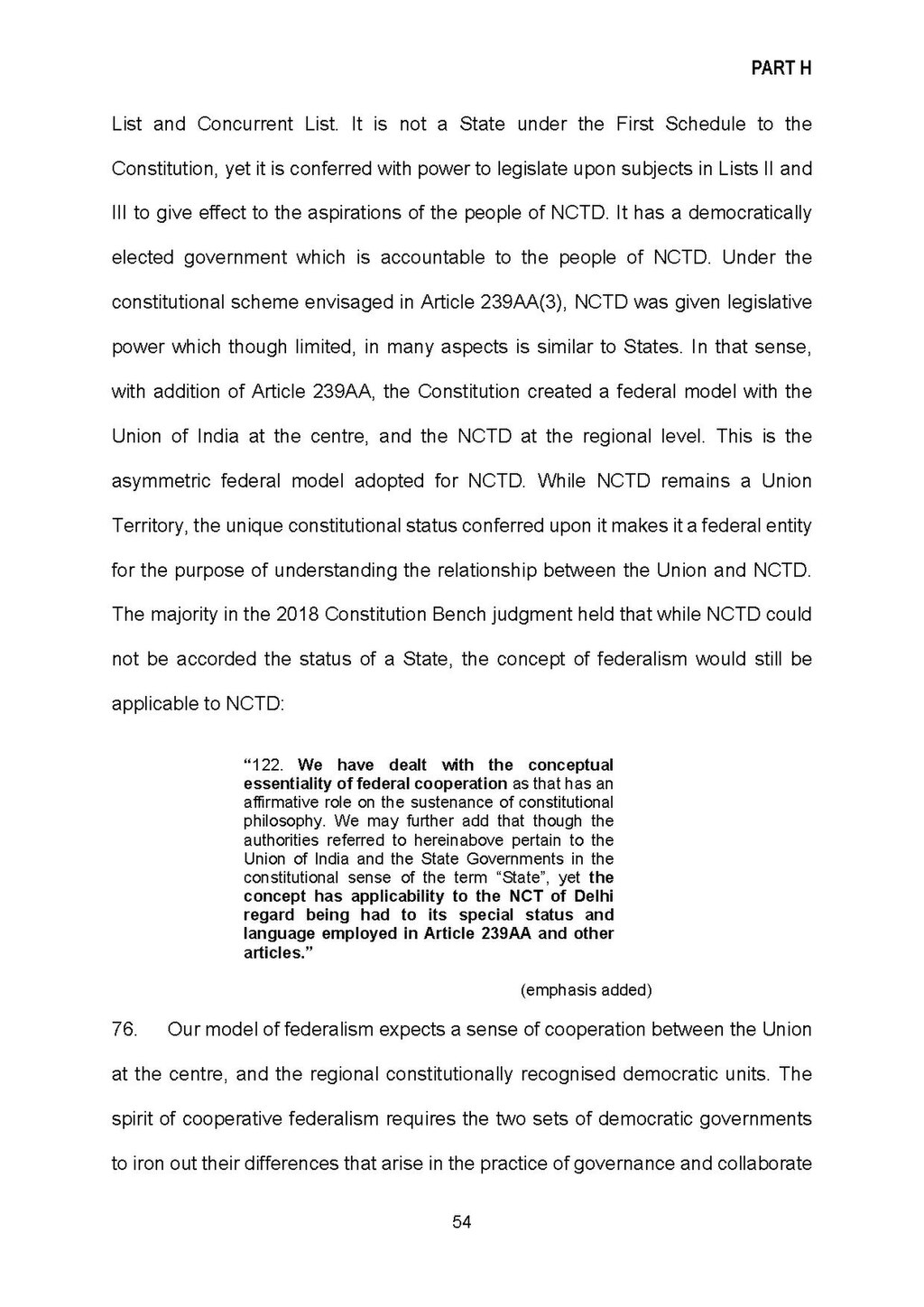List and Concurrent List. It is not a State under the First Schedule to the Constitution, yet it is conferred with power to legislate upon subjects in Lists II and III to give effect to the aspirations of the people of NCTD. It has a democratically elected government which is accountable to the people of NCTD. Under the constitutional scheme envisaged in Article 239AA(3), NCTD was given legislative power which though limited, in many aspects is similar to States. In that sense, with addition of Article 239AA, the Constitution created a federal model with the Union of India at the centre, and the NCTD at the regional level. This is the asymmetric federal model adopted for NCTD. While NCTD remains a Union Territory, the unique constitutional status conferred upon it makes it a federal entity for the purpose of understanding the relationship between the Union and NCTD. The majority in the 2018 Constitution Bench judgment held that while NCTD could not be accorded the status of a State, the concept of federalism would still be applicable to NCTD:
“122. We have dealt with the conceptual essentiality of federal cooperation as that has an affirmative role on the sustenance of constitutional philosophy. We may further add that though the authorities referred to hereinabove pertain to the Union of India and the State Governments in the constitutional sense of the term “State”, yet the concept has applicability to the NCT of Delhi regard being had to its special status and language employed in Article 239AA and other articles.” (emphasis added)
76. Our model of federalism expects a sense of cooperation between the Union at the centre, and the regional constitutionally recognised democratic units. The spirit of cooperative federalism requires the two sets of democratic governments to iron out their differences that arise in the practice of governance and collaborate
54
